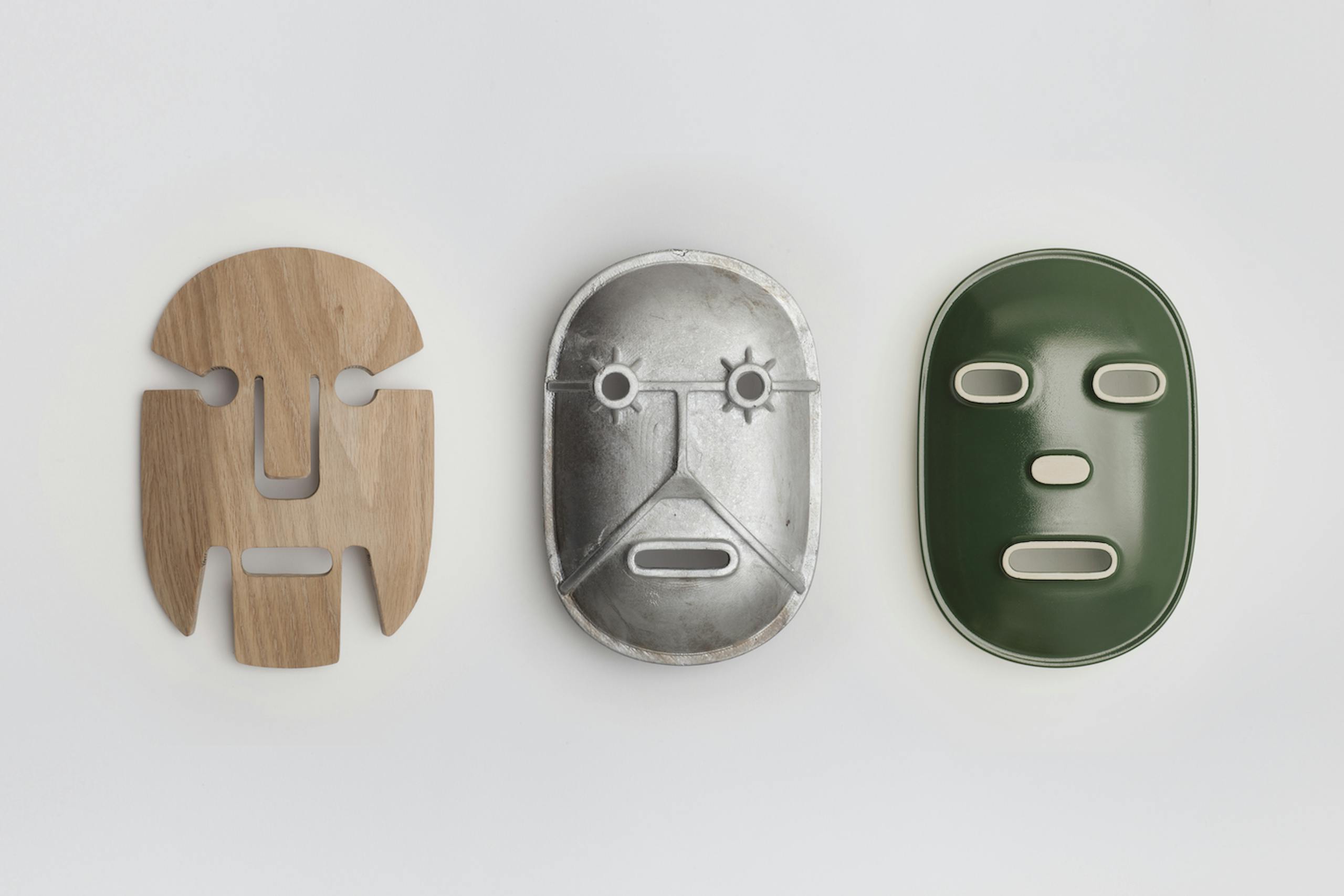
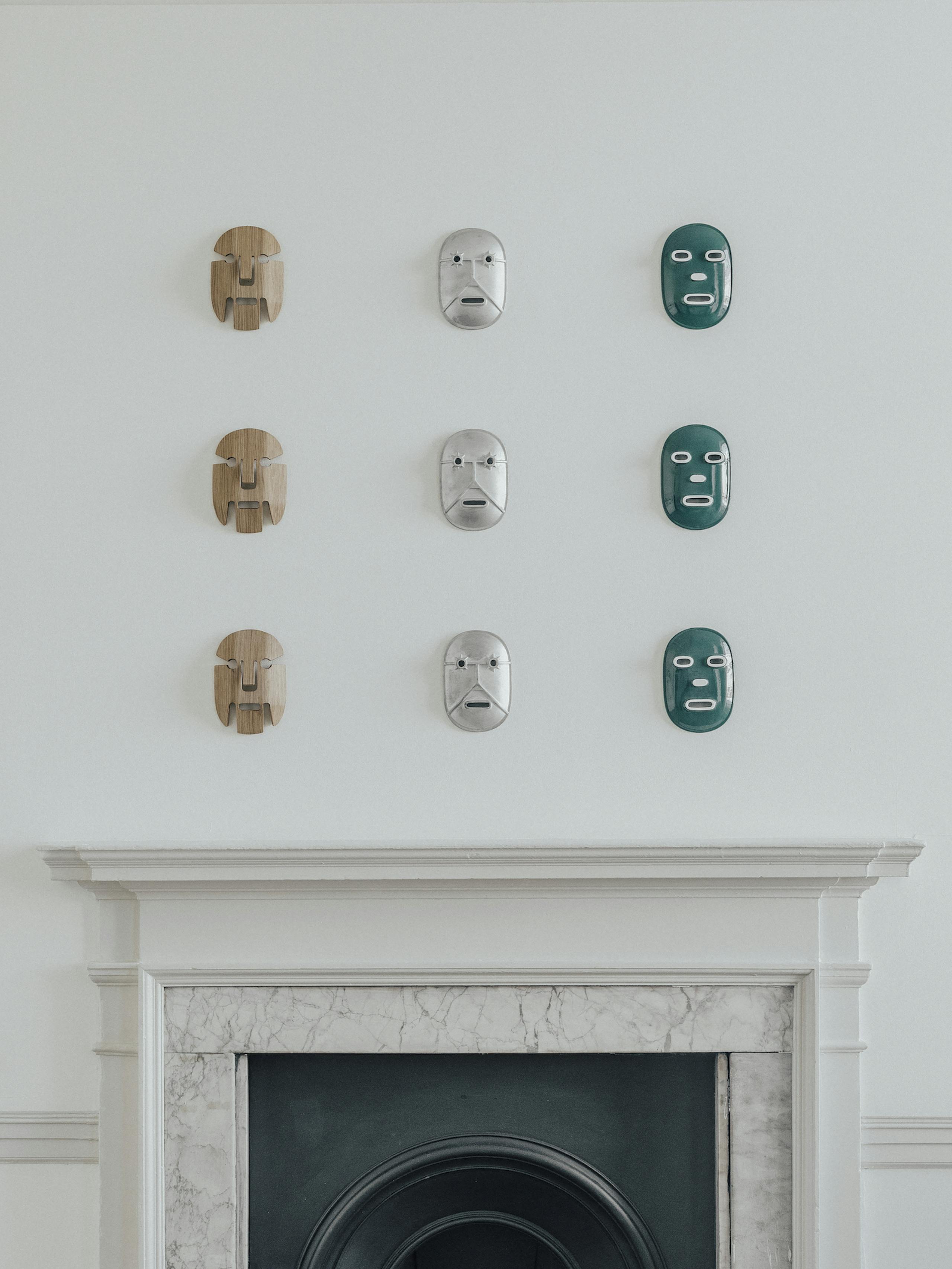
Unseen Collaborations exhibition view, the Italian Pavilion at the London Design Biennale, photo Taran Wilkhu
The Triennale Milano curatorial team have recently been collaborating internationally, taking ideas and design from the Palazzo dell’Arte around the world: “Rotterdam, Salvador and Rio de Janeiro in Brazil, and now London,” says President Stefano Boeri. Maybe it’s coincidence that these are all port cities, but there is overlap in contemporary cultural exchange and more historic industrial or capitalist exchange. Water, as a symbol of both division and connective tissue between distant nations, ideas, and desires is deeply rooted in modern systems of exchange, whether that’s contemporary modes of connecting or the embedded histories of slavery, colonialism, and conquest.
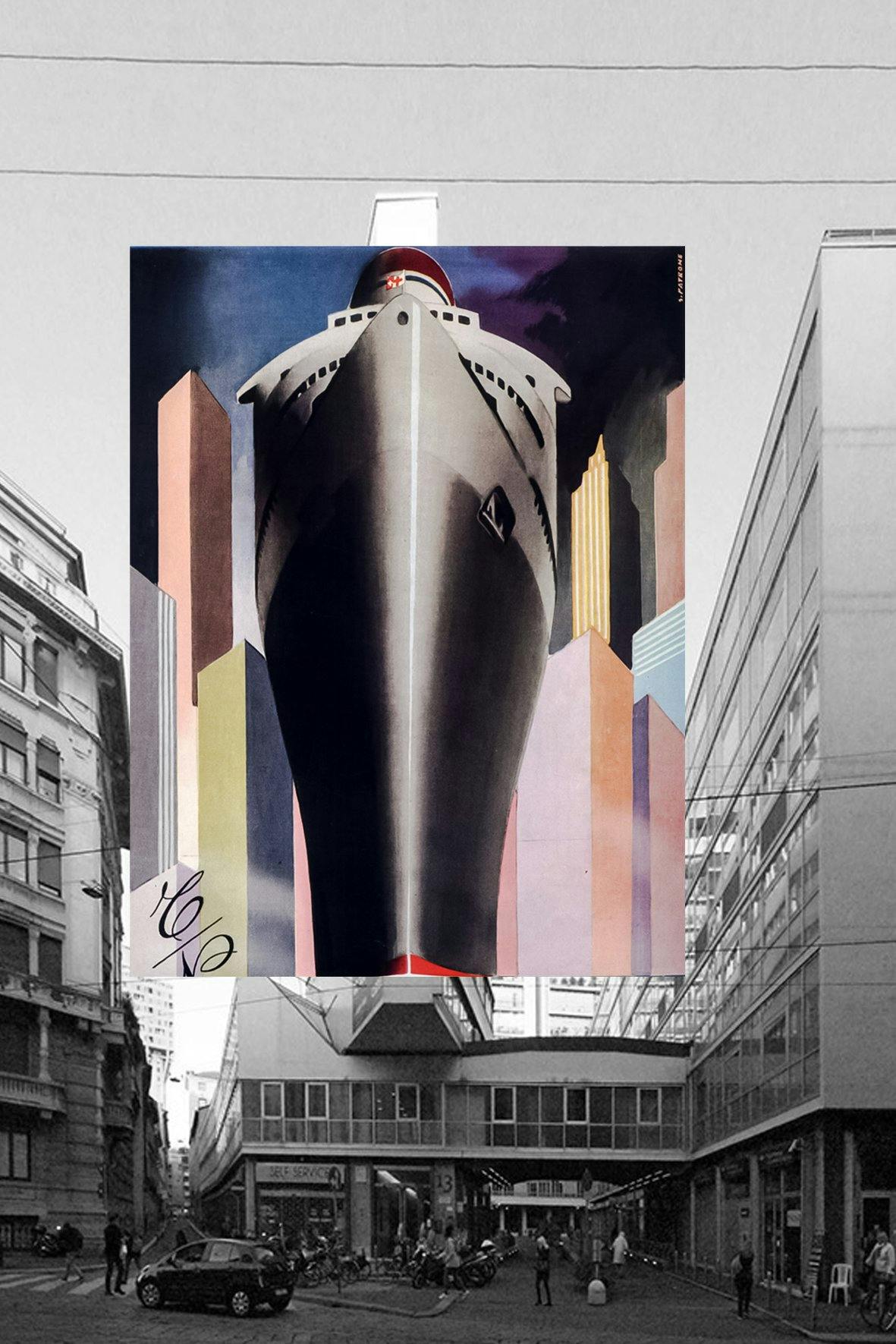
Davide Trabucco, Wall Atlas: Luigi Moretti, Multifunctional complex, Milan, Italy, 1949-1955 and SS Andrea Doria, 1951-1956
These and more are all themes which float to the surface in the Italian pavilion at the 2023 London Design Biennale, with the installation Unseen Collaborations curated by Marco Sammicheli and Marilia Pederbelli, respectively the Director of Museo del Design Italiano and Curatorial Assistant at Triennale Milano. Sammicheli says that the exhibition which incorporates works of four creatives “broadens the horizon to distant and very different geographical areas,” and it does so with both a memory of the romance and glory of seafaring, but also with reflection upon geopolitical frames of reference.

Davide Trabucco, Wall Atlas: Apollodorus of Damascus, Pantheon, Rome, Italy, 113–125 AND Marcello Mascherini, Stories of Jason and the Golden Fleece, Ceiling of the first-class veranda, SS Conte Biancamano, 1949
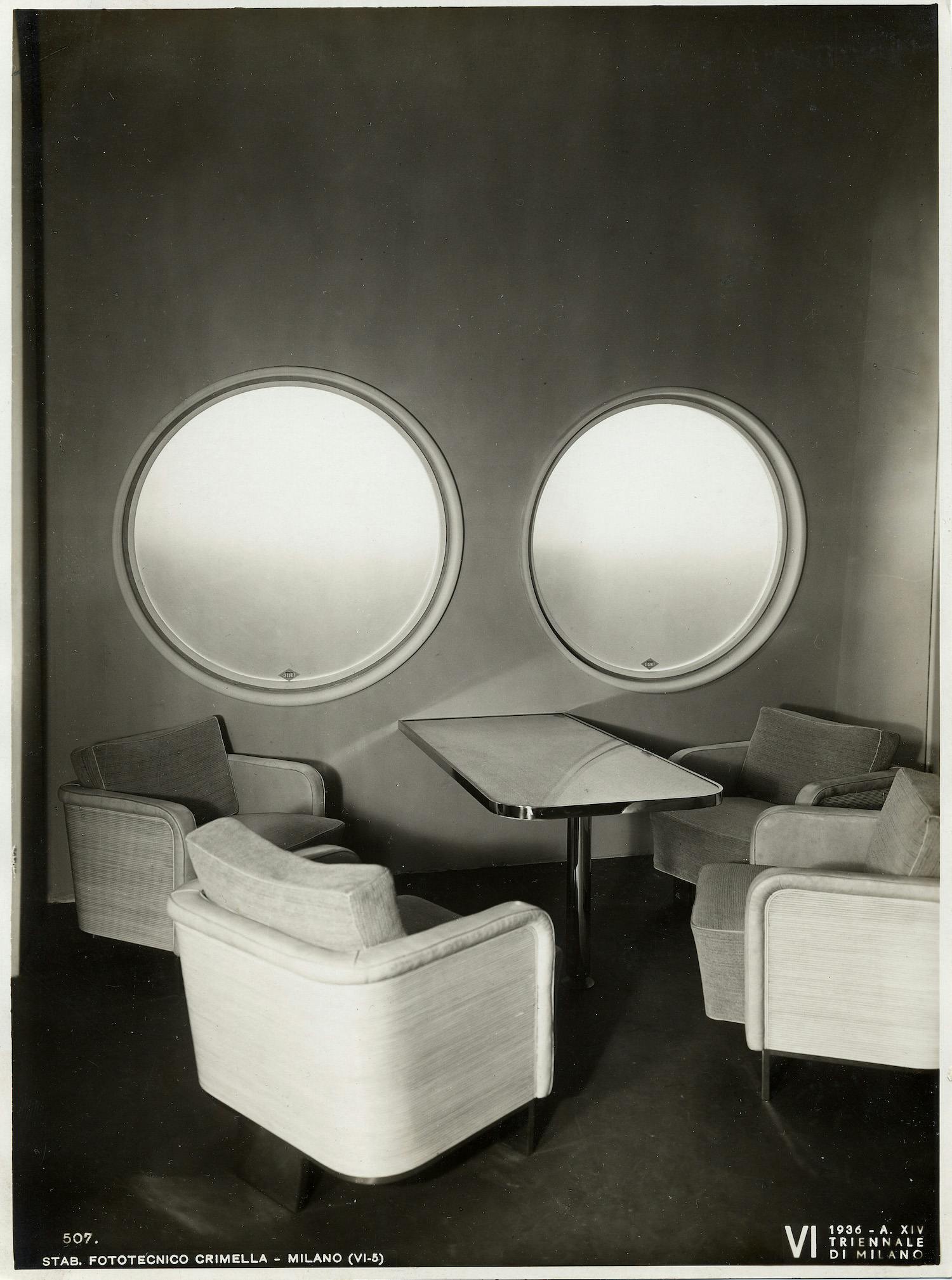
Gustavo Pulitzer-Finali, Furnishing of a ship's veranda, ‘Mostra dell’arredamento’ (Furnishing Exhibition), 6th Triennale di Milano, 1936, ph. Crimella, Triennale Milano – Archives
An undercurrent to the works is how boats are tools of power—whether militaristically, commercially, or through the soft power of culture. Davide Trabucco’s Wall Atlas (2023), creatively overlaps aesthetic collisions between architecture and Italian pre-war transatlantic liners. These boats didn’t just take the upper middle classes and elite to exotic destinations, but in themselves acted as vehicles to promote Italian culture and politics. It is from this period that the scale of such vessels grew, and while they may seem minute next to the modern-day cruise ships that tower over palazzi as they pass Venezia they grew in scale and stature, as can be seen by the richness and quality of the design and fabric inside.
They had fundamentally become architectural projects, and perhaps it is no surprise that polymath Gio Ponti—whose career traversed design, architecture, and art—had a strong interest in liners and their design. As can be seen in archive Triennale images and Trabucco’s overlapping photographs in the Italian pavilion, liners’ rooms were as grand as any built upon Terra Firma, acting as giant floating vitrines in celebration of Italian furniture, art, and industrial design.
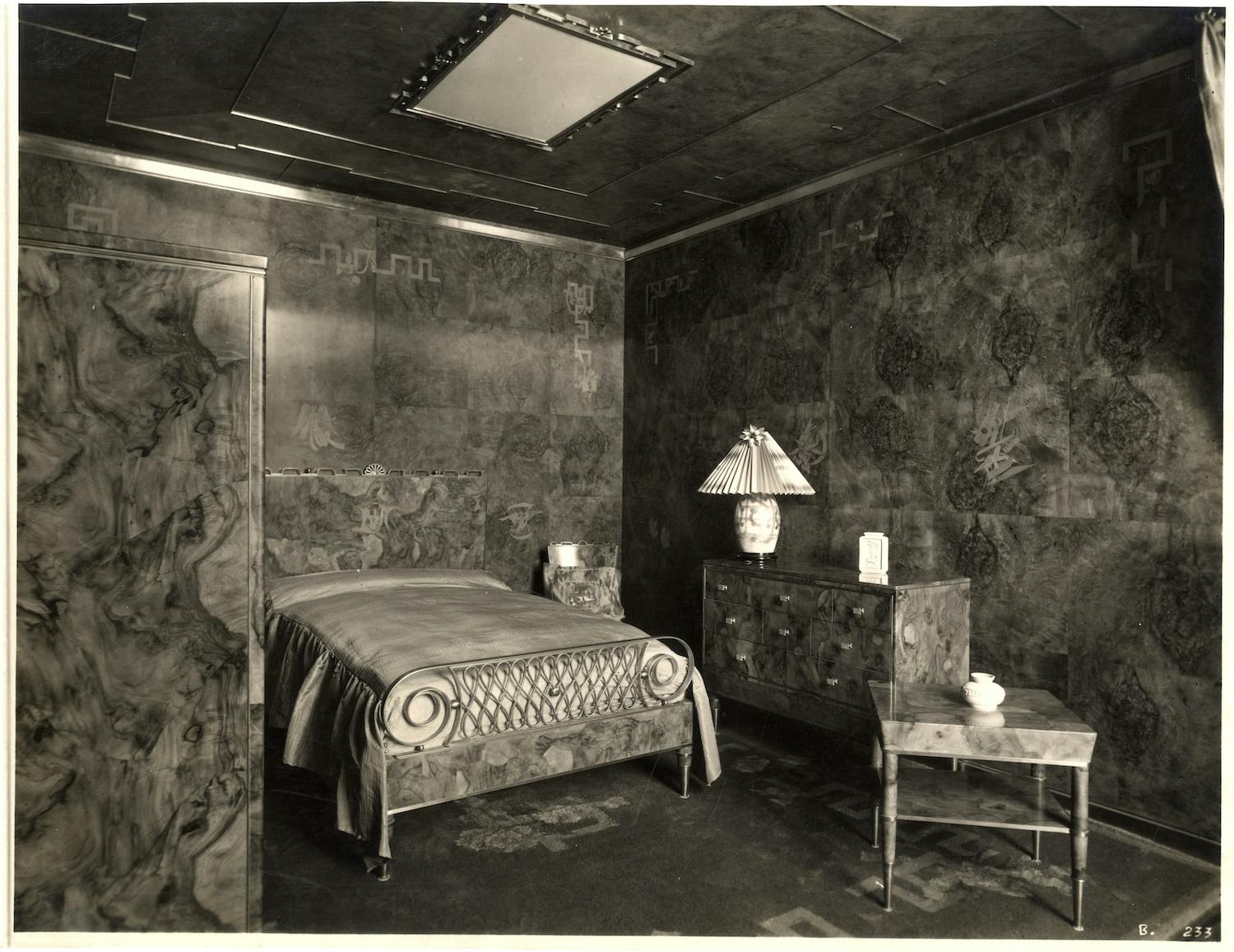
Gio Ponti, Luxury cabin for transatlantic liner developed by the firm Ditta E. Quarti S.A., 4th Triennale di Monza, 1930, ph. Girolamo Bombelli, Triennale Milano – Archives
A new work by Melania Toma, created for the Italian pavilion, speaks to this idea of cruise ship as display case of contemporary creativity. Miraggio – Casa I and II (2023) are a woven chaos, representing commissioned tapestries and rugs which decorated 20th century Italian liners. Just as ships spend most of their time between places, Toma’s tapestries also exist in a place between—home/holiday, comfort/escape, function/art.
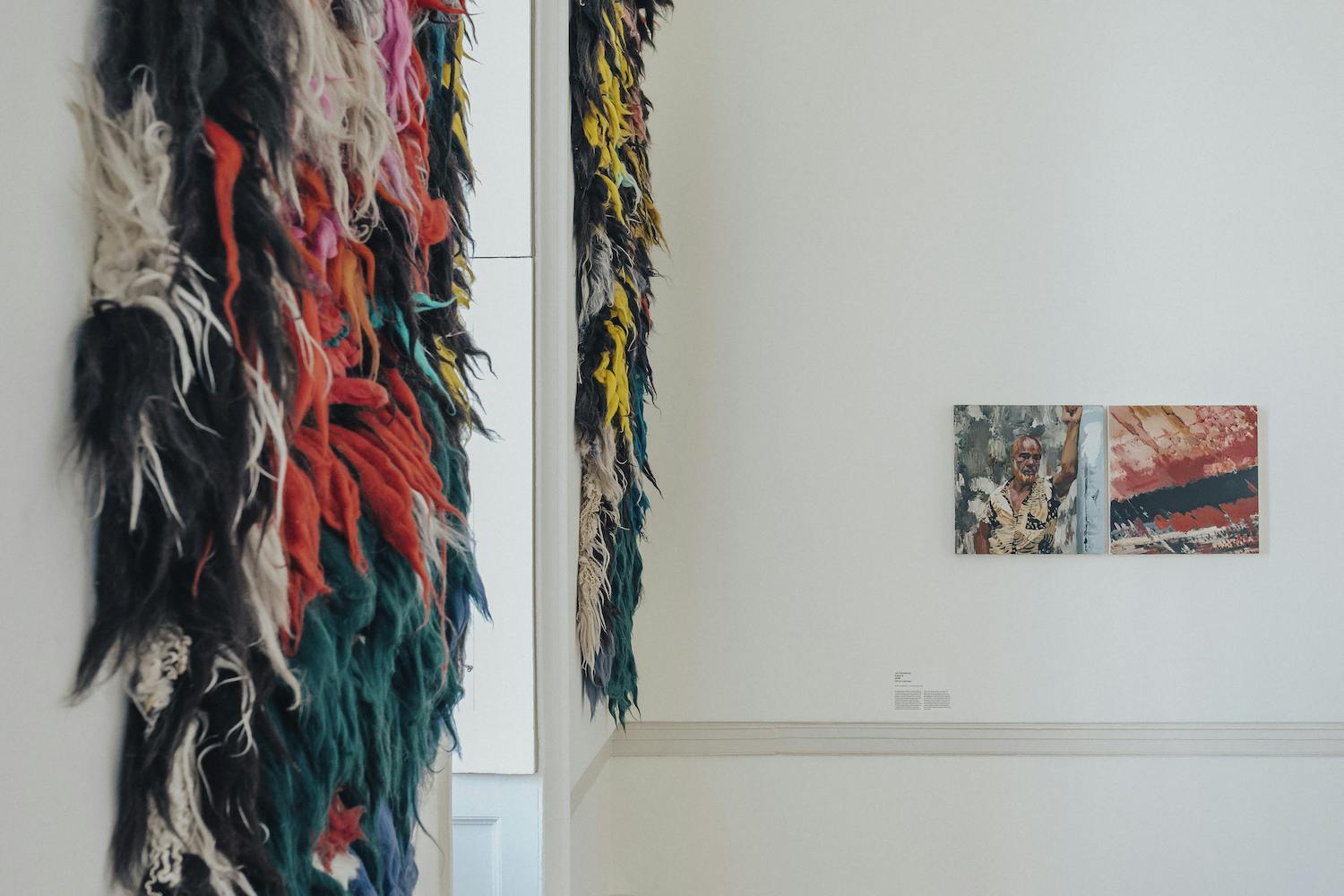
Unseen Collaborations exhibition view, the Italian Pavilion at the London Design Biennale, photo Taran Wilkhu
It is this idea of controlled escape an alluring draw of cruises, and behind repeated imaginings of off-shore living and floating city states— whether Jules Verne’s Propeller Island, the recently failed seasteading cryptocurrency ship Satoshi, or ambitious plans in Saudi Arabia for the floating Bjarke Ingels-designed Oxagon city. These physical escape plans are also usually connected to freedom from taxes and nation-state social contracts, though existent floating populations are rarely a result of luxurious choice so much as political and anthropogenic pressure: Venice was formed by people escaping the Lombards, Lagos’ water slums are resided in by people coping with rising waters, and the indigenous Uru people of Bolivia created floating islands on Lake Titicaca so to move their community when threatened by encroaching Incans.

Philippe Tabet, Order, 2017, photo Zep Studio
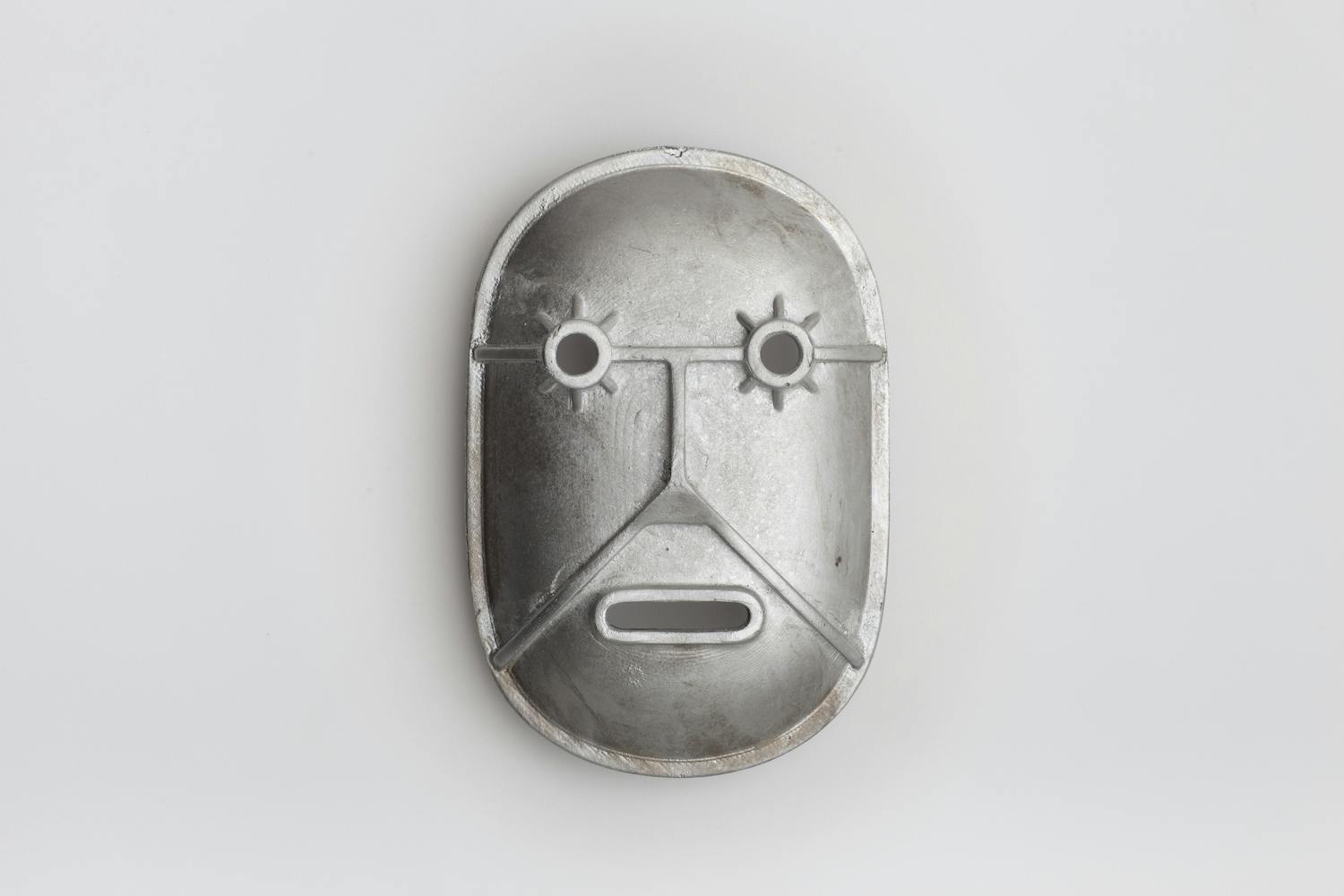
Philippe Tabet, Order, 2017, photo Zep Studio
These are residences forged from fear, need, and necessity, using crafts and design rooted in unseen collective histories and community knowledge, yet they are largely anonymous to us in the Global North. Philippe Tabet’s work on show at the Italian Pavilion, Order (2017) speaks to these notions of escape-through-craft and of invisibility. His grid of masks—formed of aluminium casting, plywood bonding, and ceramic glaze—conjure industrial protective equipment worn by fabricators and celebrates diversity of material, but also represents anonymous skills and makers. Masks, as we know from Venetian carnivals, offer anonymity, though invisibility is not usually a thing chosen by a person, but something put upon them through cultural and political conditions concealing their stories.
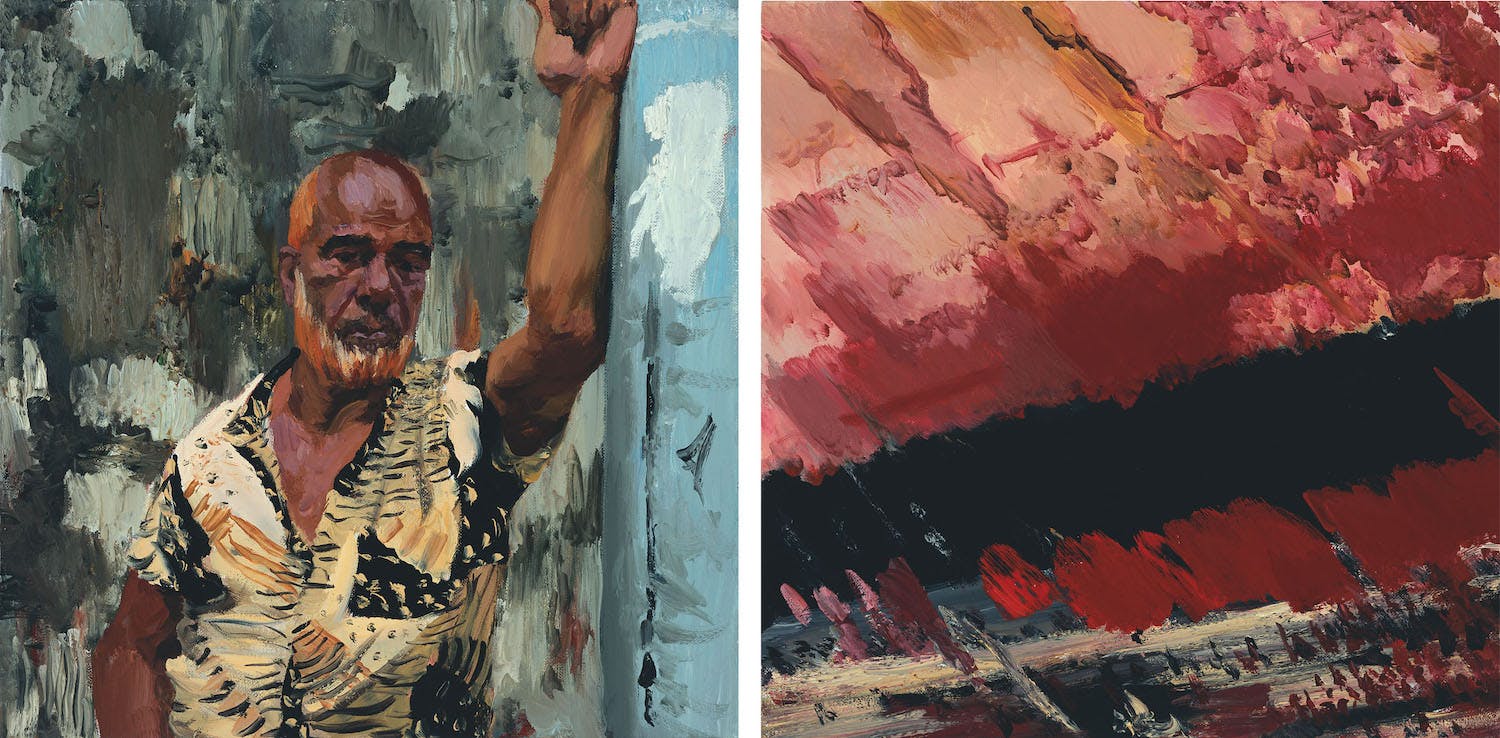
Liu Xiaodong, Steel 6, 2016
In the pavilion, Liu Xiaodong’s paintings reveal such stories, removing anonymity from the politics and culture of cruising. Steel 6 (2016) is from a wider series of paintings documenting the people and processes of breaking up retired cruise ships, a deadly and hidden industry. Such end-of-use processes and impact of design, as lived by the plight of over 25,000 people working in Chattagong—a shipbreaking town on the Bangladesh coast, which Xiaodong visited to photograph for his paintings—is invisible but profoundly embedded within the immaculate interiors, sublime finish, and creative escape resonant in the cruise ship industry. And arguably throughout the entire industry of design.
Celebrating a singular designer, or single design object, removes recognition of unseen collaborations present in the making, being, and post-use of design. Sammicheli and Pederbelli have obliquely questioned such hidden processes. Recently, Italy’s Brothers of Italy government announced that a tall ship named after merchant and explorer Amerigo Vespucci will travel the world on a “Made in Italy” tour as an act of modern soft-power identity construction. As it calls into ports across the Global North and South, promoting Italian culture and politics, it would be valuable to similarly question the unseen collaborations within the making of both culture and politics, and the concealed geopolitical and anthropogenic impacts.
Related events
